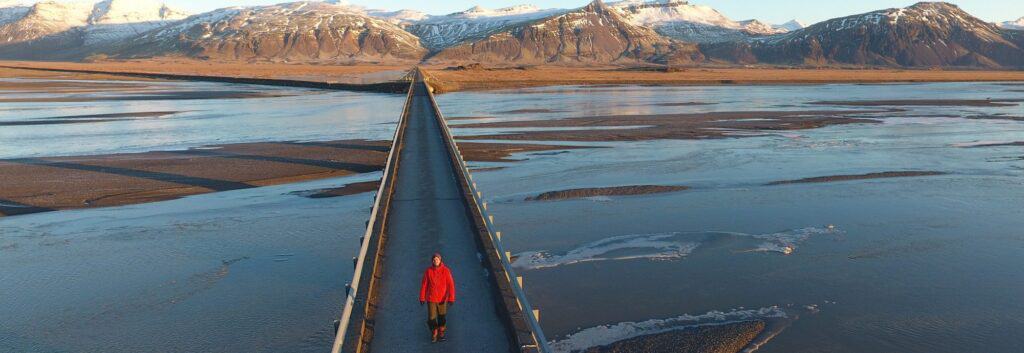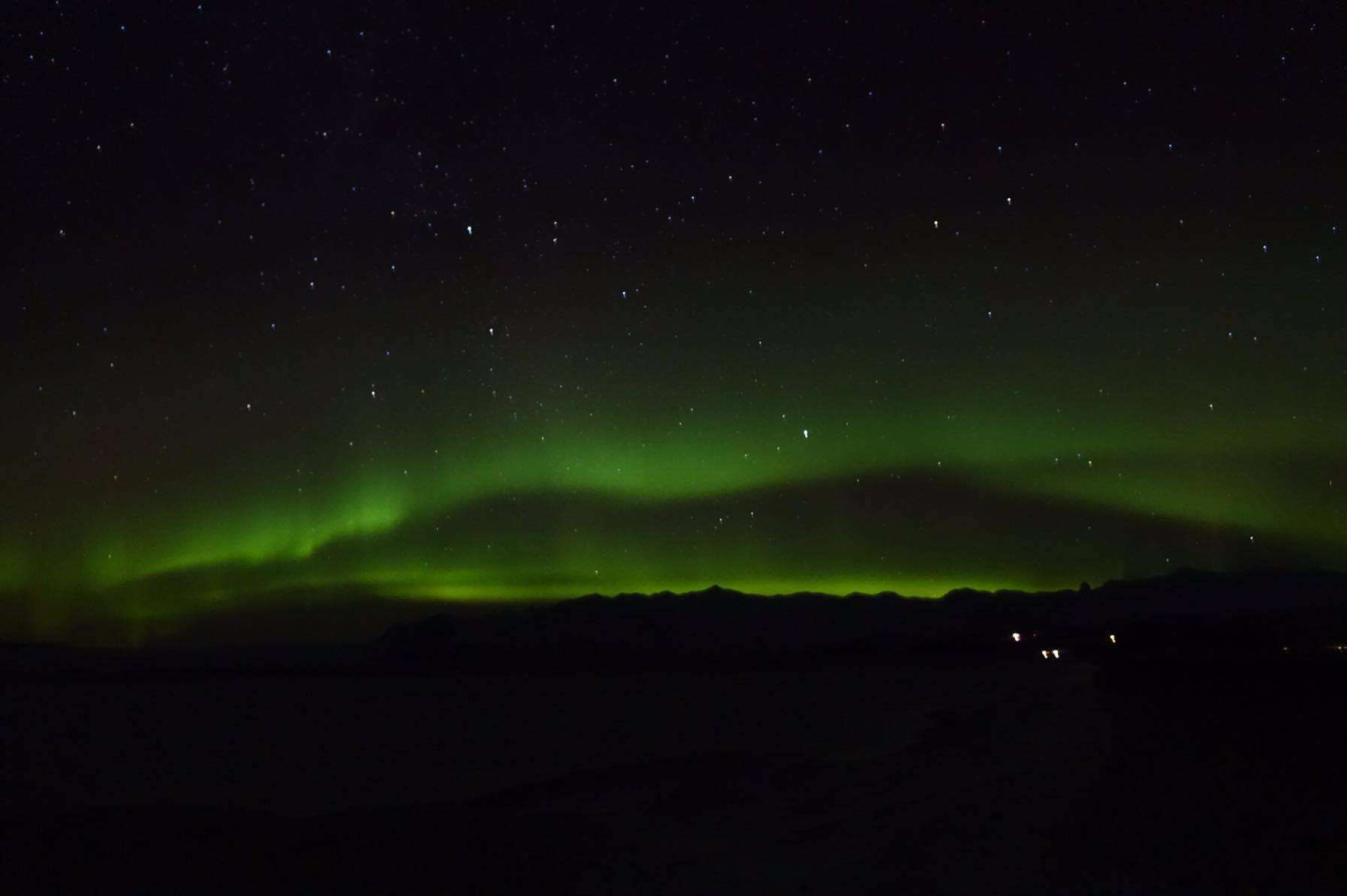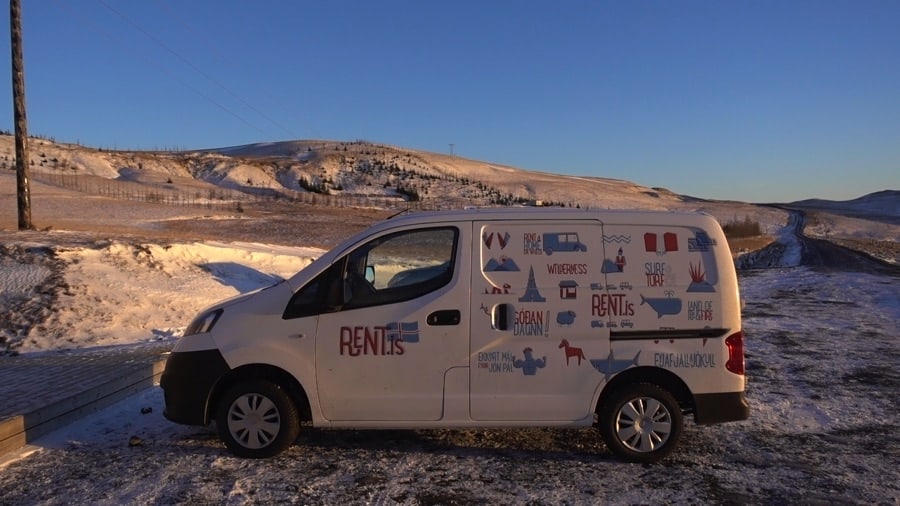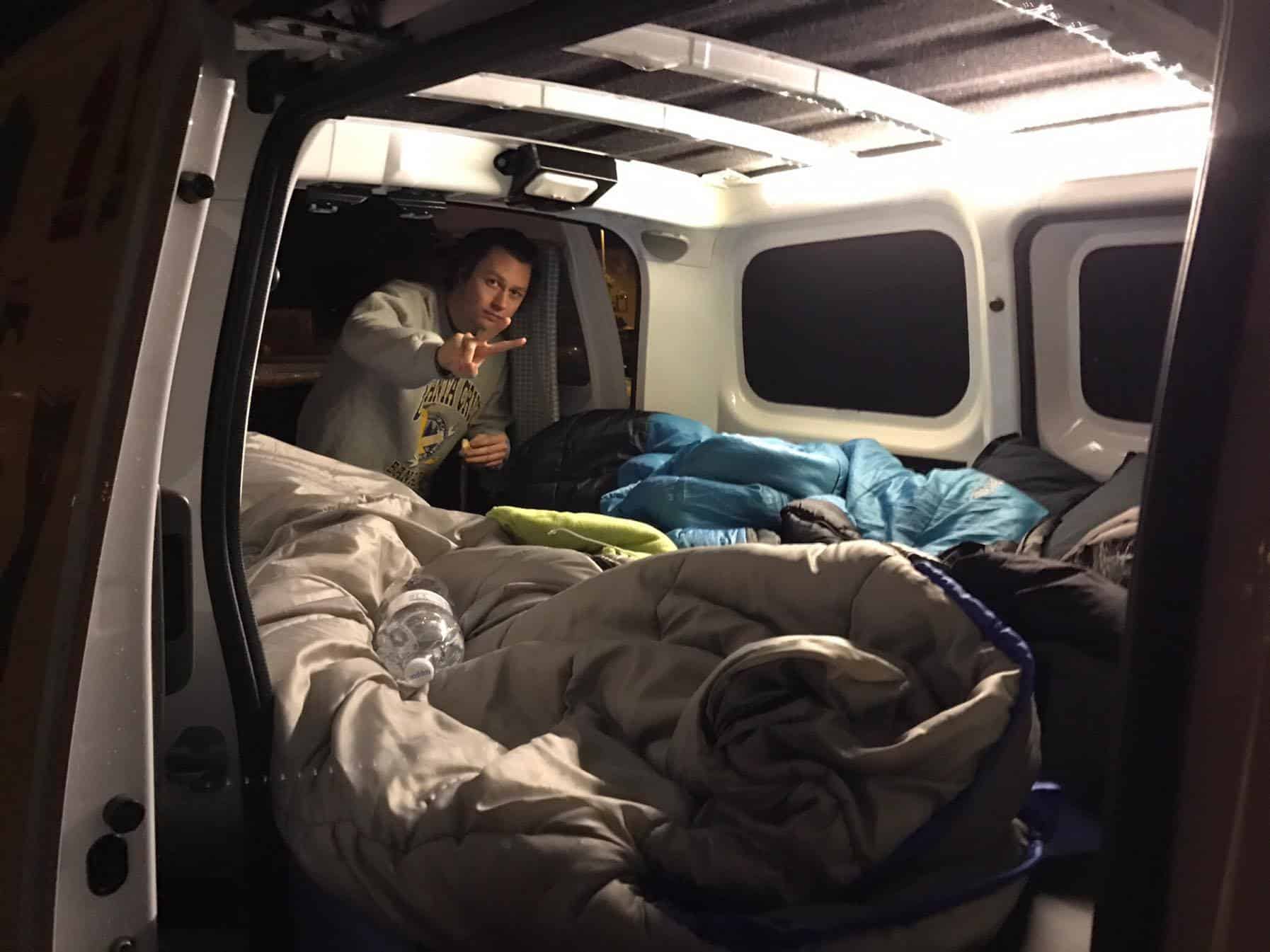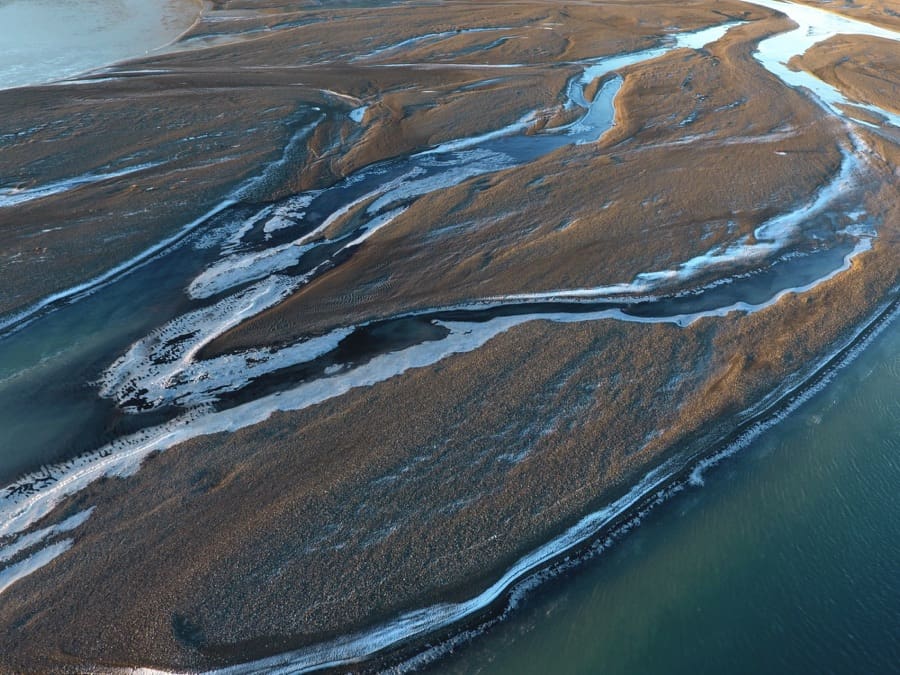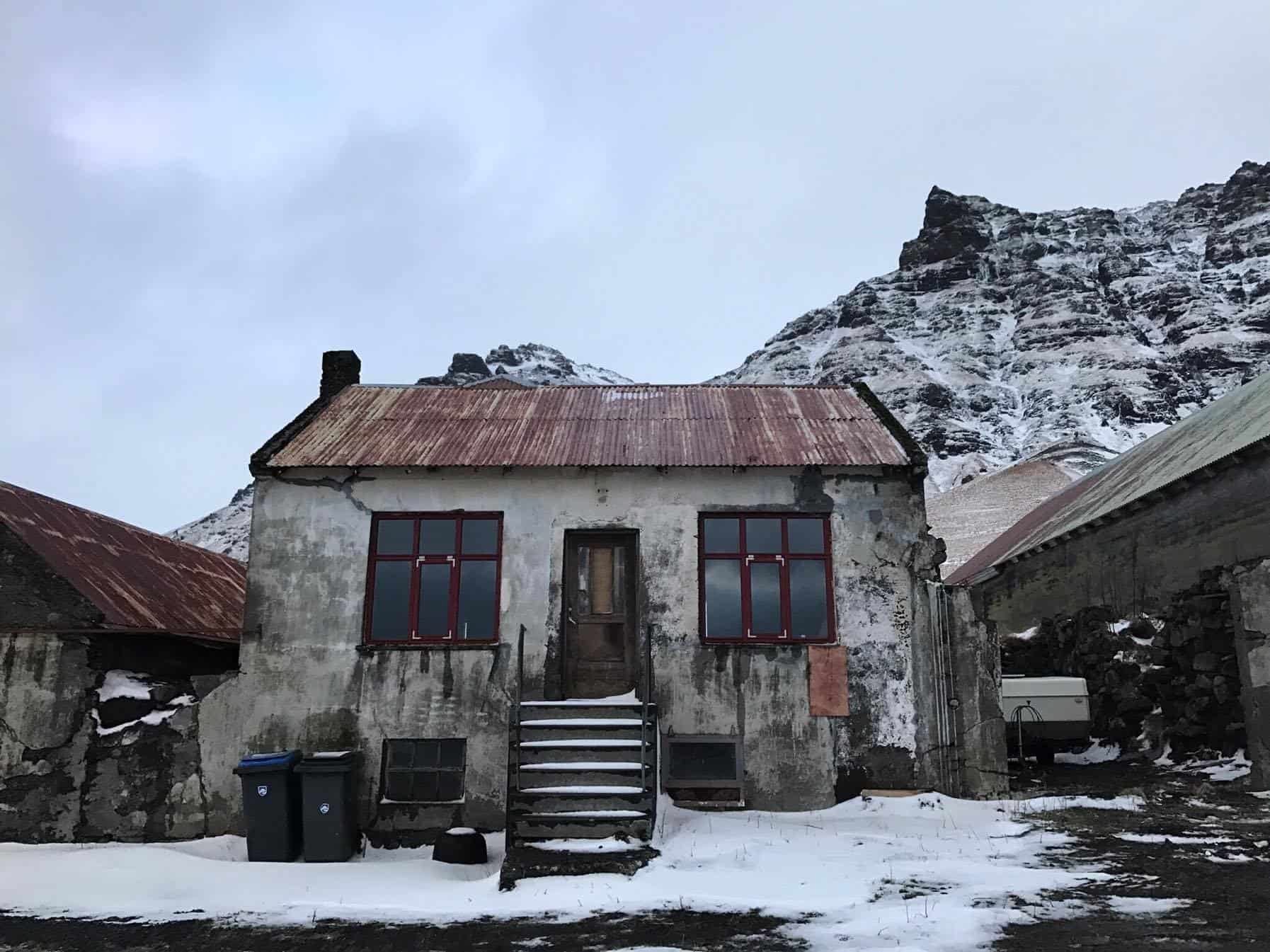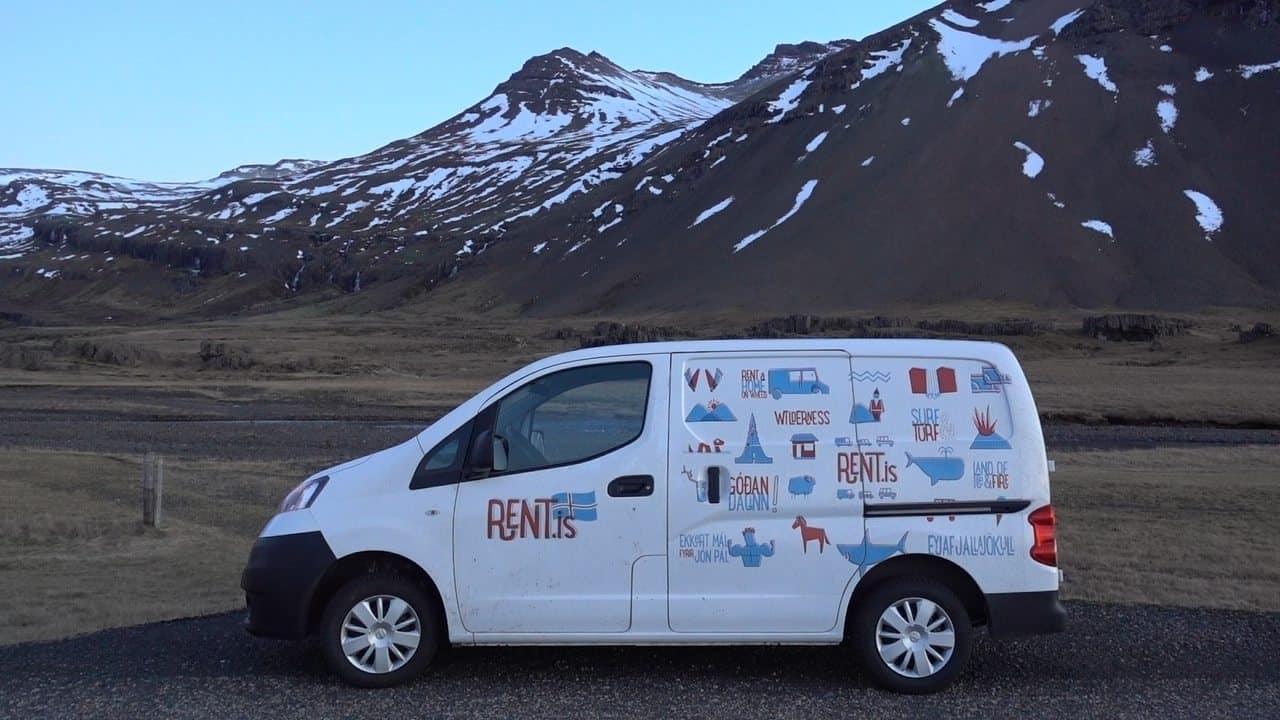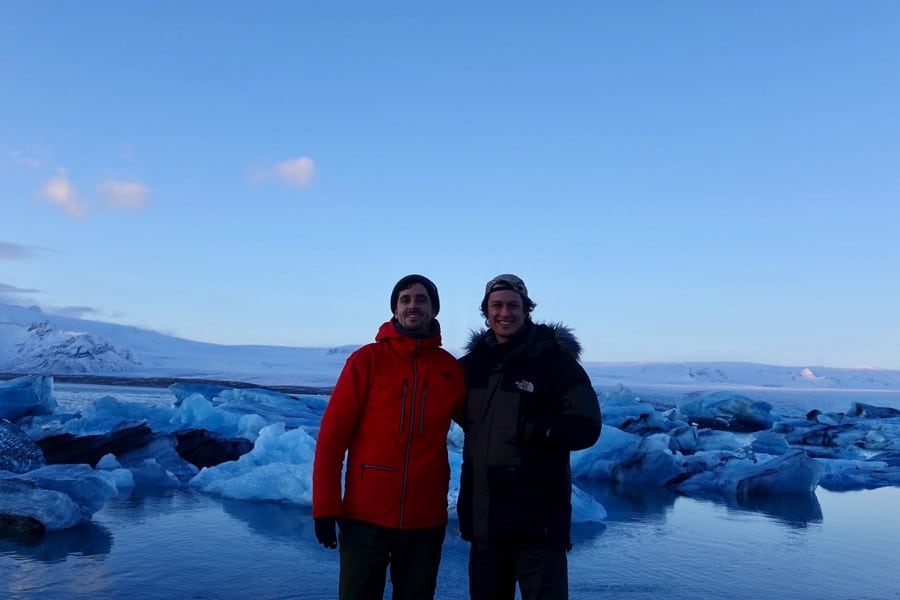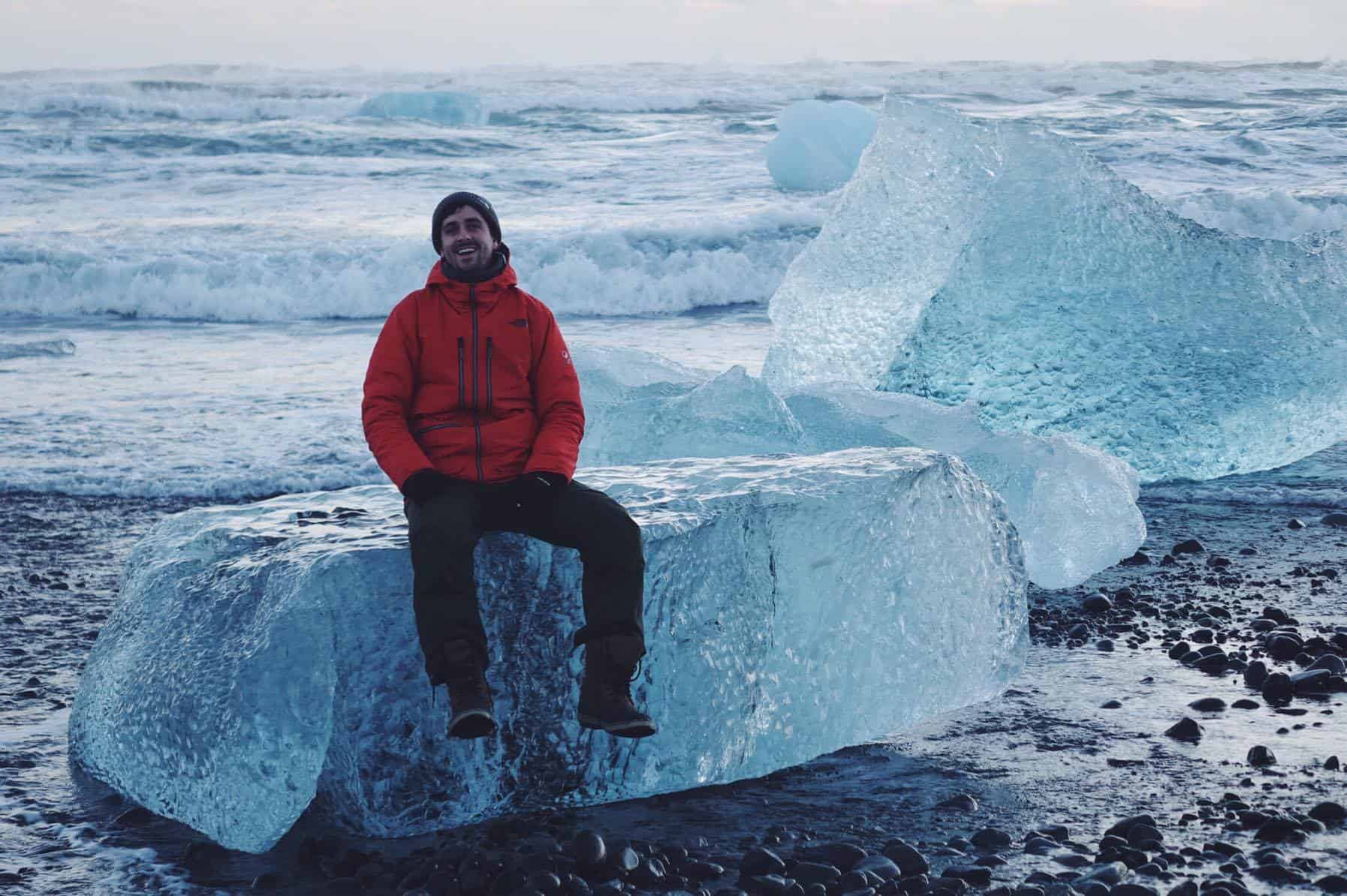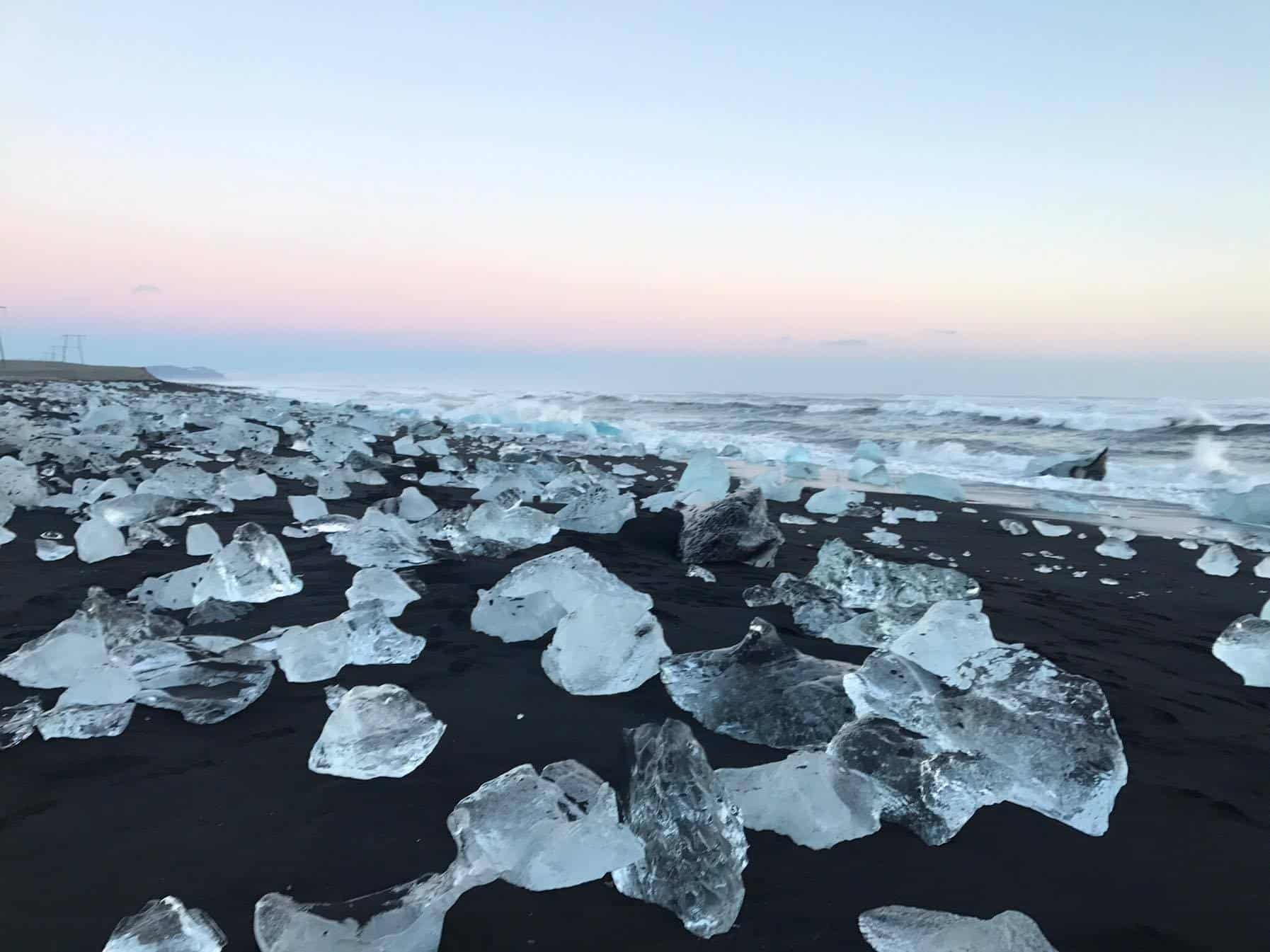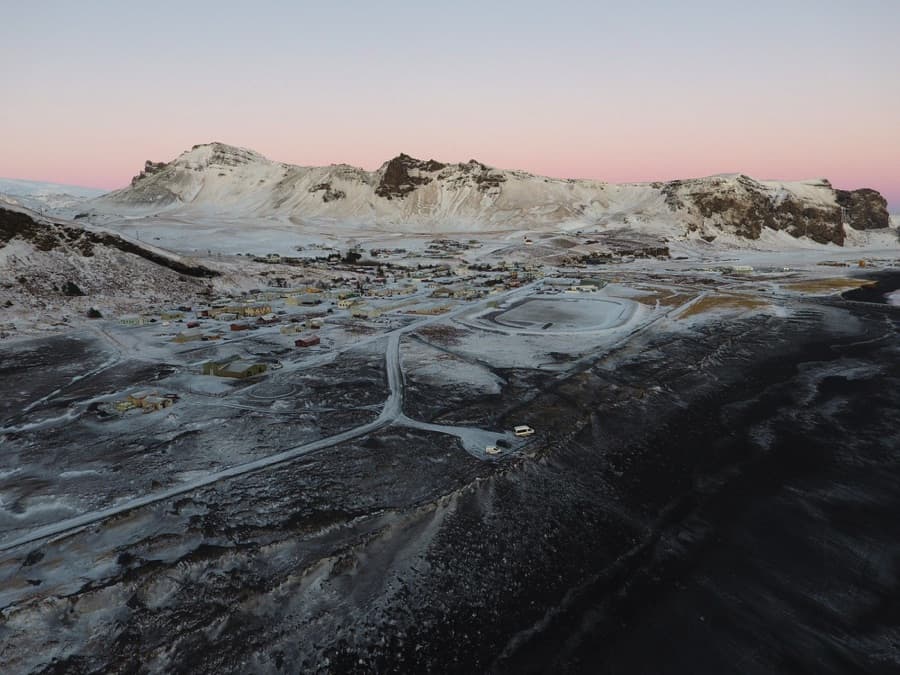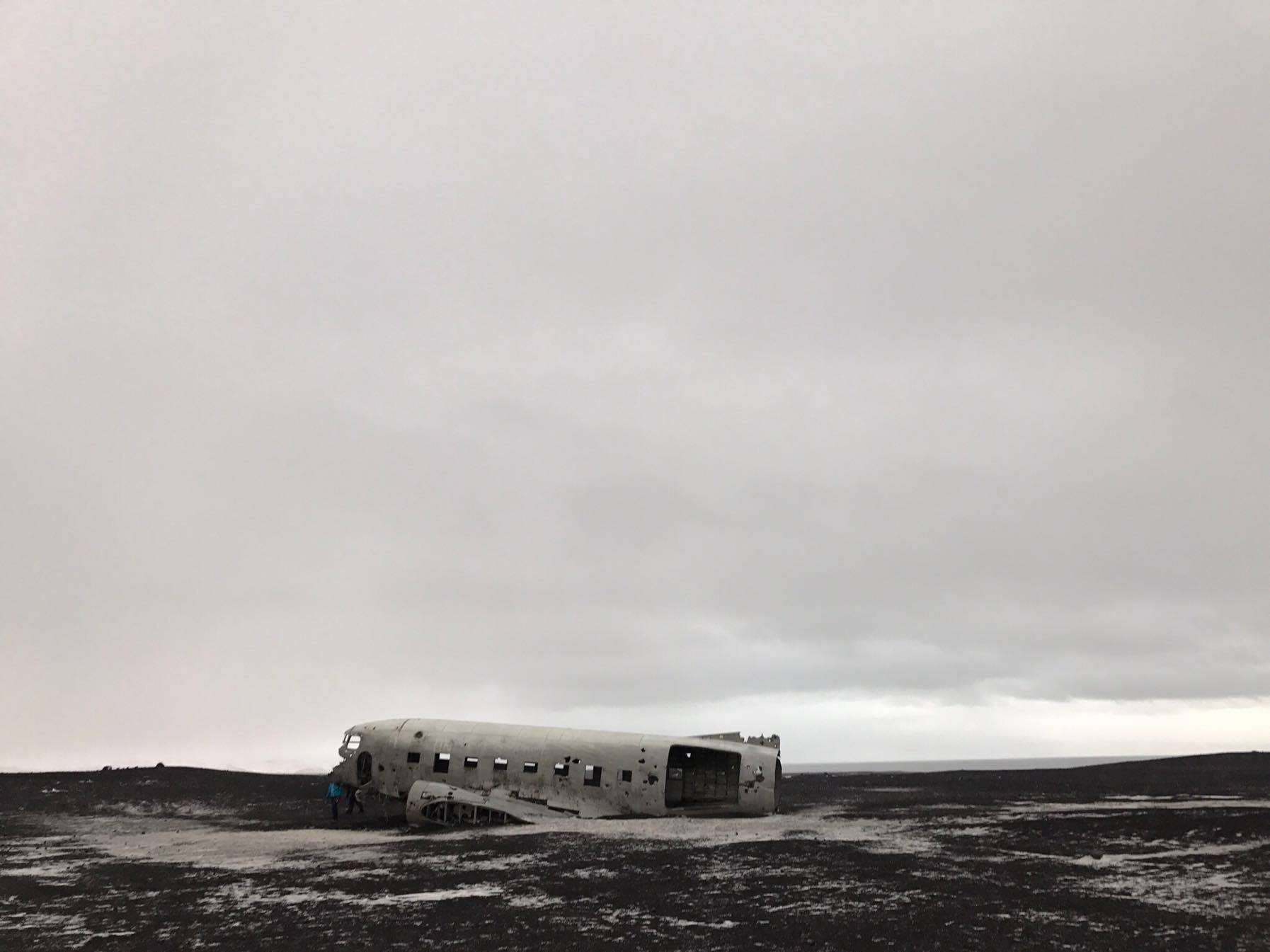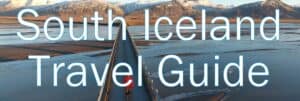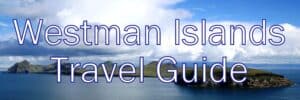Old friends’ meetup in Iceland for an unforgettable camper van trip

You would think a person had to be crazy to visit Iceland in the winter. There are plenty of beachfront resorts and tropical getaways for the same cost of a trip to the arctic. On the sandy beaches in Spain and Portugal, you don’t need to wear a minimum of three layers of clothing. On the beaches of Central America, the sun rises and sets at reasonable hours.
And yet here I was with my friend Ben – bound for Iceland in the dead of winter. As our plane from Ireland barreled towards Iceland around 3 PM, we looked out our window at what appeared to be a frozen, uninhabited tundra. The sun was already dropping below the horizon thus ending another winter day while people further south in Europe had several more hours of daylight to enjoy.
Maybe our family, friends and random strangers who expressed concern about the trip were right. Iceland might just be a country too far north, and too close to the arctic. Maybe it would remain a winter destination for only the savviest of travelers and adventurers.

What was initial uncertainty as our plane touched down in Keflavik would slowly transform into genuine admiration for this country of only 340,000 people. Iceland would certainly test our limits during our seven day trip, but we would leave having visited a country so rich in beauty, its limited five hours of daylight was worth a week’s worth of sightseeing in any other country.
The decision to book a trip to Iceland was not accidental. Ben and I had grown up together on the west coast of the United States in Portland, Oregon. Ben had been working in Ireland for the previous year and a half and was about to transfer back home to San Francisco. While we had both traveled to 25+ countries individually, neither of us had been as far north as Iceland. We had also never seen the
Northern Lights.
We had heard the best way to experience the Northern Lights was to drive Iceland’s iconic
Ring Road. All of the advice we received said that the ideal way to explore the Ring Road was by camper van. Since the Ring Road stretches 1,332 curvy kilometers along Route 1, we booked our trip for nine days in Iceland, seven of which would be in the camper van. This would give us enough time to drive the circumference of Iceland. We also would have a day at the beginning and end of our trip in Reykjavik.
After some research, we landed on
Rent.is as the best option for renting. The rates were great and the vans looked wonderful. Neither Ben nor I had explored a country by camper van so this was going to be new territory for us. We were both excited to see what life would be like touring with our hotel room on four wheels.
After gathering our luggage at Keflavik International Airport and getting a quick bite to eat, we headed straight for the Rent.Is offices. When we arrived, we discovered why touring Iceland by camper van was so highly recommended and why Rent.is was so popular.
Our camper van came with what we needed to see everything on our journey. We rented the Renault Kangoo Camper which is perfect for two people. A large full sized bed was situated in the back. The sometimes frigid Icelandic winter was masked by the warmth of a heater that ran off a second car battery. We had free WiFi making it easy to use navigation and bluetooth speakers giving us full access to all of our music and podcasts. There was also cooking pans for when we wanted to make dinner with a view.
With all of these amenities – we departed on our journey. After a great first night in Iceland seeing the amazing Hallgrimskirkia church and venturing into local restaurants and pubs in Reykjavik, we departed north along Route 1 in our as the sun was rising around 10:30 AM.
The Ring Road is astonishing within minutes of leaving Reykjavik. We were met immediately with 360 views of rolling hills covered in fresh snow. Waterfalls dotted the coastline as cliff faces would rise and fall into the breathtaking ocean. Farms with the famous Icelandic ponies were everywhere. The animals were always eager to come say hello whenever we stopped our car. And we found ourselves stopping the car frequently during that first day. We developed a routine of hopping out of the car to snap a few pictures and admire the views. When we weren’t stopping, we would drive down the road with our mouths agape at each new view around every corner.
We covered a lot of driving on our first day. Most travel guides recommend allowing between 6-10 days to navigate the Ring Road. Since we were on the shorter side for time, we wanted to drive the Northwest section in a day so we would have ample time to explore the western and southern sides of Iceland – which many consider to have the best sights.
The highlight of our first day was the magnificent Kirkjufell. Also called Church Mountain, the giant rock formation shoots out of the ocean toward the sky. There is a beautiful waterfall just west of the mountain that makes it the perfect viewpoint to sit down and eat while taking in the views. It’s also a wonderful place to snap pictures. Due to its uniqueness, and we believed rightfully so, Kirkjufell is Iceland’s most photographed mountain.
We spent the rest of our first day stopping off at other sites on Route 1 as we drove the remaining five hours from Kirkjufell to the ocean town of Akureyri. A big section of Route 1 between Kirkjufell and Akureyri turns to gravel, and while it was easy to drive on, we definitely recommend getting the gravel insurance!
It was dark by 16:00 so we drove the last few hours in pitch-black. We stopped off at a
gas station for a quick bite to eat where we tried our first Icelandic hot dog. It would be the first of far too many we would eat on our trip. We also pulled off for a brief nap, which we would also do quite frequently throughout the trip. Mid-drive naps were the best way to take advantage of touring Iceland with a camper van while staying fully energized.
We arrived in Akureyri around 20:30. After finding a campsite to park the van, we settled in for our first night. With the heater blasting, we fell asleep watching Netflix.
If day one was great, day two was even better. We woke up and started driving in the dark for
Goðafoss waterfall. Since we knew we would have only five hours of daylight to see stuff during the day, we decided to wake up before the sun rose and drive to our first destination. The benefit of this is that we got to drive while the sun rose, casting beautiful colors on the surrounding mountains.
When we arrived at Goðafoss just as it was getting bright out, we discovered there were only a few other tourists there. Iceland is significantly less crowded in the winter – providing us with intimate views of places that might normally be very busy during warmer months. It was wonderful to stand out on a rock and admire the power of the water in complete peace.
The highlight of our second day was Mývatn. A short drive from Goðafoss, the Mývatn area features the completely frozen Lake Mývatn, the mesmerizing and Hverfjall crater and the relaxing Mývatn Nature Baths. We spent the rest of the daylight of day two exploring this beautiful area as it provided a perfect combination of adventure and relaxation.
The benefits of the camper van became very clear those first few days. As other travelers had to head back to hotels for the night, we drove forward so we could wake up at our next destination. If we wanted to stay the night in a different place than planned, we could easily make that decision last minute.
Driving during the night also proved to offer one of the best surprises of the trip. We were blown away on the second night of our journey as we pulled into a camper parking area in the dark. Unaware of our surroundings, we settled into bed. To our surprise, we woke up on the third day right next to Seyðisfjörður. We had a magnificent view of the town situated within the breathtaking walls of a giant fjord. After eating breakfast in the van, we journeyed into the town where we were left in awe by the beauty surrounding Seyðisfjörður.

From Seyðisfjörður, we navigated back onto Route 1 where we spent the remainder of the day climbing over mountain passes, stopping off at frozen lakes and weaving in and out of the many other fjords that were carved into Iceland’s eastern coast.
By the time we arrived in Djúpivogur, it was dark. We were excited to settle in since the town offered us a camper van site with hot showers – the first since we had departed Reykjavik. We also learned of an undeveloped
hot springs just outside of town that we ventured to after having dinner.
We didn’t end up staying a full night in Djúpivogur though. This was the first night we had clear skies that offered the best opportunity to see the Northern Lights for the first time. At 4:00, we woke up and drove the van outside of town. The aurora forecast that night was relatively low so we only saw minor glimpses of the Northern Lights. After an hour of photographing them, we climbed back into bed and slept until the sun came up.
The fourth day was all about glaciers for us and proved to be the most memorable day of the trip. The highlight of the day, and arguably one of the best places we visited on the entire trip, was the Jökulsárlón Glacier Lagoon.
Right off of Route 1, the lagoon is full of jagged bobbing chunks of glacier that have floated down toward the ocean from the Jökulsárlón Glacier. At first glance, the glacier chunks appear statuesque, standing completely still in the freezing water. The more time we spent on the shoreline, the more we noticed the giant glacier pieces would sway and move in the water. While we marveled on the shoreline, at our feet were tiny pieces of glacier ice that looked as if someone scattered shattered glass near the water.
Right next to Jökulsárlón is Diamond Beach. An equally amazing site, smaller chunks of glaciers line the beach as waves wash them ashore. There is nowhere else in the world quite like this beach. We stayed here until the sun went down as we took in the uniqueness of the location.
We ended our night outside around midnight with stunning views of the Northern Lights. The forecast was even stronger and the skies were clear. It was our first super clear view of the aurora.
Our fifth day was the last day of 2016. We woke up and hiked to Svartifoss Waterfall. From there we moved onto Vik and the infamous
black sand beaches. The area surrounding Vik had so much to offer that we decided to spend the rest of the day here. We marveled at the rock outcroppings on the beach right next to Vik. We drove up to the top of Dyrhólaey Arch which offered amazing overhead views of the black sand streaking west down the coastline. We finished the day at Reynishverfisvegur. I cannot emphasize enough how amazing the sites are around Vik. It would be easy to spend a whole week taking it all in.
As darkness fell on Vik, we soon realized Icelandic people love to light off fireworks on New Year’s Eve. From dusk until well after midnight, there was a constant stream of fireworks being launched from the town and surrounding farms. As we went into the Icelandair Hotel Vik for a late dinner, the aurora was already out and at its strongest since we had landed in Iceland.

We headed straight out of town after dinner to watch the Northern Lights outside the city. We drove around various areas outside Vik to get different views as the aurora was booming. It was so impressive that we watched the Northern Lights for three solid hours until 1 AM. It was the perfect send off to 2016 and start to 2017.
The sixth day was our final section of the Ring Road. We had made better time than expected and only had a few places left to see. We embarked on the surprisingly long walk to the DC-3 plane wreck. Since it is winter in Iceland and there aren’t that many other travelers, we ended up having the whole place to ourselves for more than 30 minutes. Both the hike to and away felt like we were walking on the moon.
Just down the road was the astonishingly powerful Skógafoss Waterfall. Many of the waterfalls in Iceland when we visited weren’t at full strength due to freezing temperatures restricting water flow. For Skógafoss, this was not the case. The waterfall was at full force. It was an amazing last stop along our Ring Road journey.
We finished our trip to Iceland in typical tourist fashion with a trip to the Blue Lagoon. We made it onto a last minute booking for the final hour of the night. In pitch black, we took in the warmth of the bath. After spending so many nights in the van, it felt great to relax in the water and soak up our surroundings.
We weren’t due to return the camper van until the following evening. Having completed the Ring Road with some time to spare – we decided to visit Arctic Surfers where we rented a couple surfboards and headed for the ocean. Thorli beach was recommended as the best destination which was a short and scenic 40 minute drive southeast of Reykjavik. The waves were wonderful, and while getting in and out of the wetsuit was cold, the experience was very memorable.
After dropping off the surfboards, we headed back to Keflavik to return the camper van. We unloaded all of our gear with ease and handed back the keys to the staff member at Rent.Is. We bid a final fare to our trusty camper van and took a taxi to our hostel to rest up before an early morning flight back to Dublin.
Our roadtrip video
By seeing Iceland by camper van, we felt like we were able to get a customizable trip that was uniquely ours. We were our own tour guides as we navigated one of the most beautiful places in the world. Wherever we wanted to go, and whatever we wanted to see, was made possible by touring Iceland by camper van.
Happy Camping! #CamperStories
Iceland Travel Guides


If you like what you see, please subscribe to our YouTube channel!
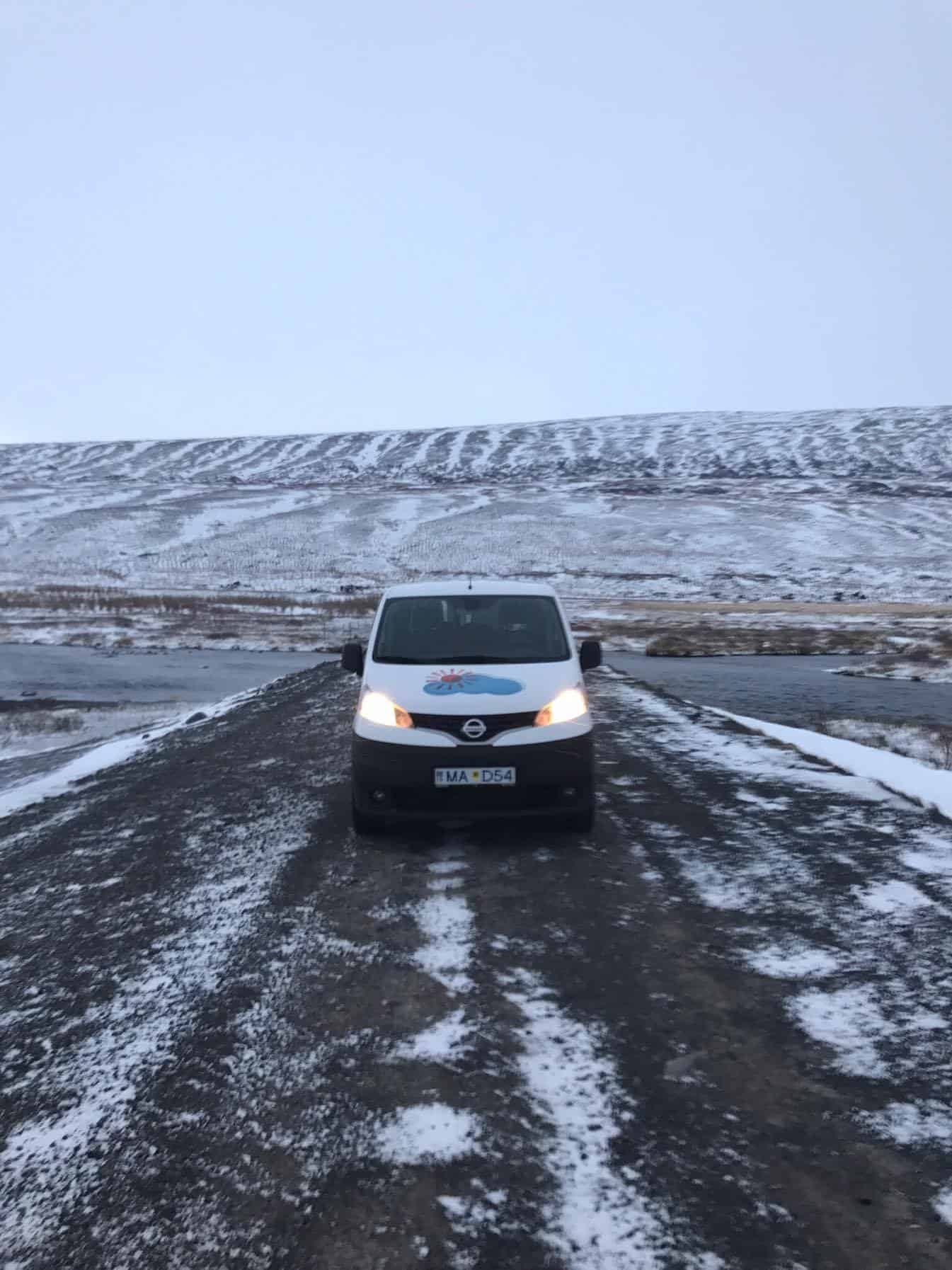 You would think a person had to be crazy to visit Iceland in the winter. There are plenty of beachfront resorts and tropical getaways for the same cost of a trip to the arctic. On the sandy beaches in Spain and Portugal, you don’t need to wear a minimum of three layers of clothing. On the beaches of Central America, the sun rises and sets at reasonable hours.
You would think a person had to be crazy to visit Iceland in the winter. There are plenty of beachfront resorts and tropical getaways for the same cost of a trip to the arctic. On the sandy beaches in Spain and Portugal, you don’t need to wear a minimum of three layers of clothing. On the beaches of Central America, the sun rises and sets at reasonable hours.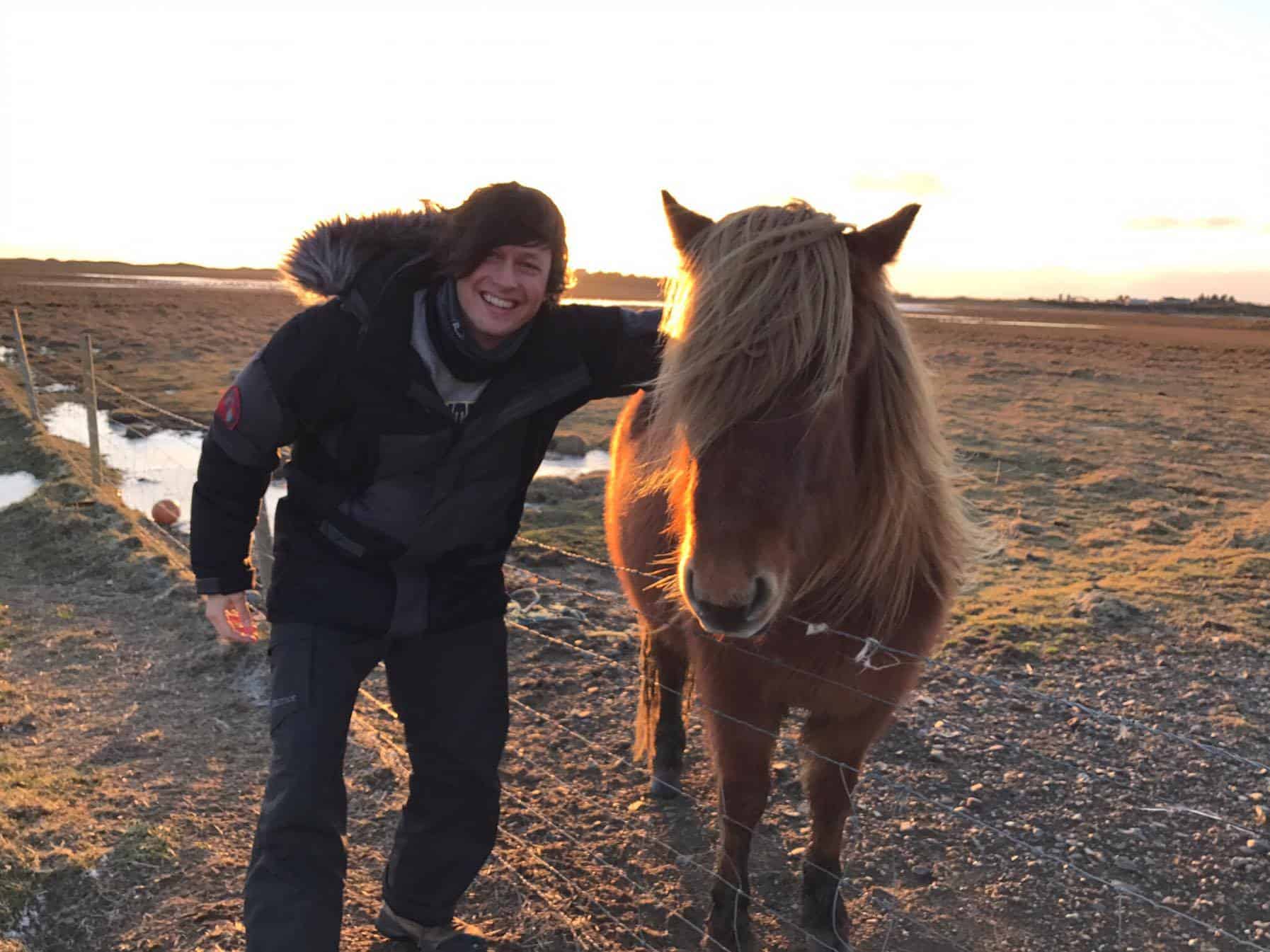 What was initial uncertainty as our plane touched down in Keflavik would slowly transform into genuine admiration for this country of only 340,000 people. Iceland would certainly test our limits during our seven day trip, but we would leave having visited a country so rich in beauty, its limited five hours of daylight was worth a week’s worth of sightseeing in any other country.
What was initial uncertainty as our plane touched down in Keflavik would slowly transform into genuine admiration for this country of only 340,000 people. Iceland would certainly test our limits during our seven day trip, but we would leave having visited a country so rich in beauty, its limited five hours of daylight was worth a week’s worth of sightseeing in any other country.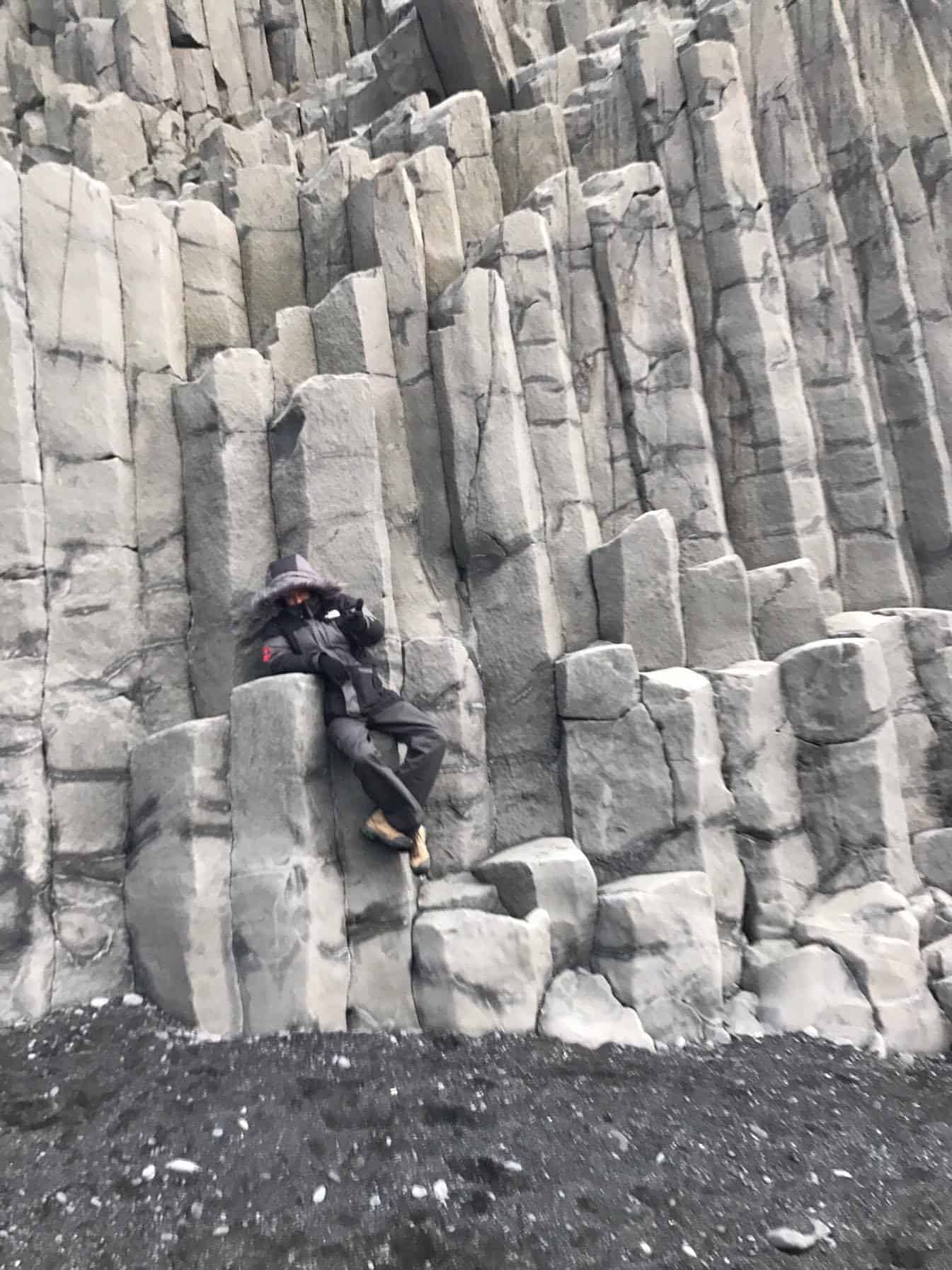 From Seyðisfjörður, we navigated back onto Route 1 where we spent the remainder of the day climbing over mountain passes, stopping off at frozen lakes and weaving in and out of the many other fjords that were carved into Iceland’s eastern coast.
From Seyðisfjörður, we navigated back onto Route 1 where we spent the remainder of the day climbing over mountain passes, stopping off at frozen lakes and weaving in and out of the many other fjords that were carved into Iceland’s eastern coast.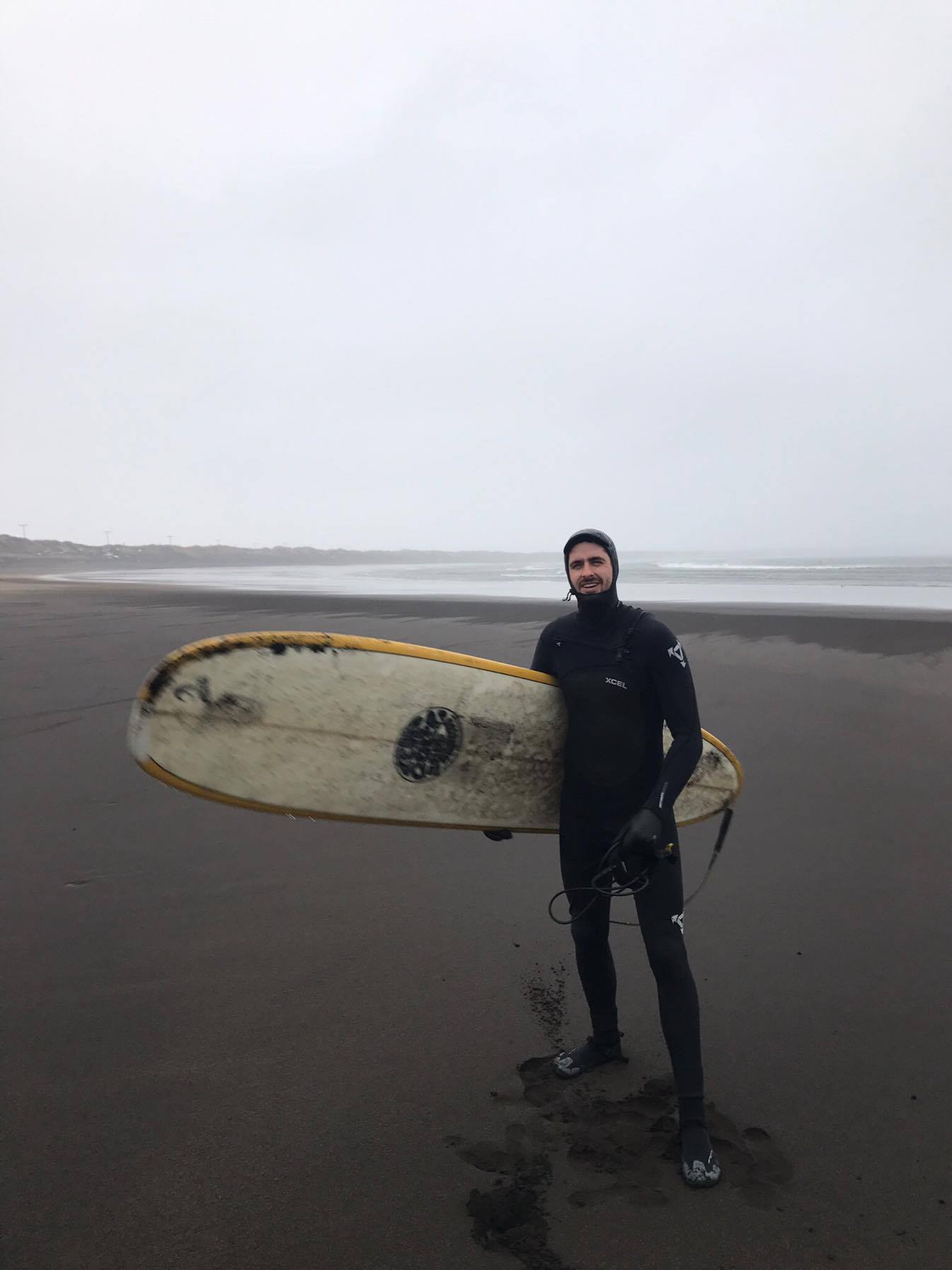 We headed straight out of town after dinner to watch the Northern Lights outside the city. We drove around various areas outside Vik to get different views as the aurora was booming. It was so impressive that we watched the Northern Lights for three solid hours until 1 AM. It was the perfect send off to 2016 and start to 2017.
We headed straight out of town after dinner to watch the Northern Lights outside the city. We drove around various areas outside Vik to get different views as the aurora was booming. It was so impressive that we watched the Northern Lights for three solid hours until 1 AM. It was the perfect send off to 2016 and start to 2017.
